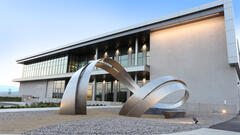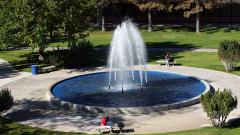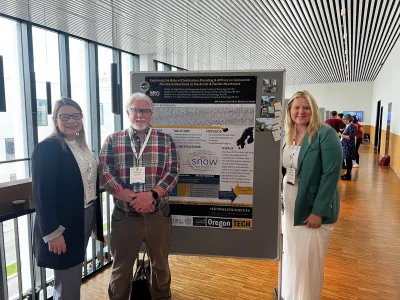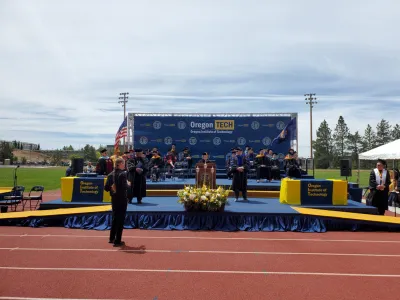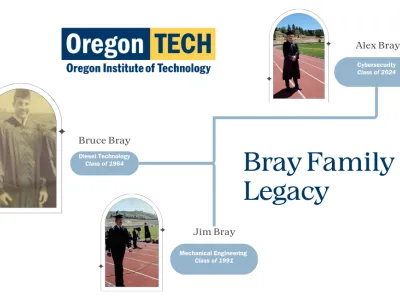Title: The Working Ranch, photographs by Madeleine Graham Blake
Exhibit Dates: May 2, 2011 through July 29, 2011 at the Shaw Historical Library
Exhibit Hours: Monday – Friday, 1:00pm to 5:00pm
Exhibit Location: Shaw Historical Library on the Oregon Institute of Technology
campus, second floor of the Learning Resources Center, 3201 Campus Dr., Klamath
Falls, OR 97601
Exhibit Information on the Web: http://www.library.oit.edu/shaw/exhibits.html
About the Exhibit The Working Ranch
The Working Ranch is an exhibit of black and white and color photographs by Madeleine Graham Blake. These images, photographed over a twenty-year time span, document traditional ranching in the American West. Taken in Oregon, Nevada and California, the works are on display at the Shaw Historical Library now through July 29, 2011. Admission to the Shaw Historical Library is free.
The exhibit illuminates the ways of the modern working ranch. We are given an intimate view into a private world. Blake stated, “I am interested in an authentic look at the workings of the contemporary ranch. No setup shots; just the real deal using available light. I want to provide a glimpse into the tremendous effort that is necessary to run a ranch and the intelligence it takes to be successful. I have also explored the family structure which is a vital component to a successful ranch. Dedication, determination, and powerful bonds of love and pride unite families to each other and to the land. I hope this is evident in my photographs.”
About Photographing Rural Ranchers
This exhibit is focused on Blake’s interest in people who are directly involved with the land upon which they live. “Some of the ranches I’ve photographed are small, run by individual families; some ranches are large with hired hands. But size doesn’t matter in one very important way: the Cowboy Tradition is our American myth – kind of the ‘Camelot’ of the American West. This is a tradition that was born of a time when there was no government control or interference. These people are fiercely independent. They figure out how to solve their problems without picking up a phone or using a credit card.
Ranch children, who grow up with this mindset are fascinating. Most of these children are homeschooled and have chores and responsibilities. These children are not ferried about like urban children, rather they work—and play—alongside the adults as the day’s work is done. They are really sharp, and develop a kind of confidence that comes from being part of a working team from an early age. Their life style seems very healthy to me; they spend much of their time outside being physically very active. They grow up knowing their environment: the land, the weather, the animals. No one goes to work in a ranch family – they simply live their lives and take care of business,” explained Blake.
About the Photography Process
Blake used both film-based and digital technologies in the images in this exhibition. Digital photography is an especially immediate technique. She explained that the digital medium helped her subjects see what she was trying to do right away. “With the children it was very advantageous. They love to see what I was seeing,” commented Blake. “When I am working with film, I am more invisible. No one stops working to look at the screen on my camera. The color photographs in the exhibit were produced with a digital 35mm Canon and were printed on watercolor paper. The large black and white prints were made with a Hasselblad and I scanned the negatives and printed on watercolor paper. The silver gelatin prints, also made with the Hasselblad, were printed in an old-fashioned wetlab.
About Madeleine Graham Blake
Born in Klamath Falls, Oregon, Blake was given her first camera at the age of nine. Growing up in small towns in California and Oregon, she finally settled in the Bay Area, receiving a degree in photography at San Francisco State College (now California University at San Francisco). Her husband, Tupper Ansel Bake, a wildlife photographer of some renown, brought her back to the Klamath area.
Blake works both in fine art and documentary photography styles. She has an innate talent for capturing intimate portraits and emotive outdoor scenes. She has been focused in recent years on the lives of people living in rural areas. Her latest subjects have been located in the American West, Tibet and Mongolia.
She is co-author of Balancing Water: Restoration in the Klamath Basin and Mandeville Island: A Fine Balance, both with Tupper Ansel Blake and William Kittredge. Her photographs are included in The Family Ranch: Land, Children and Tradition in the American West written by Linda Hussa.
Madeleine Blake taught photography at Dominican University of California in San Rafael. Her work is regularly shown in museums and galleries in the West. Recent shows include the High Desert Museum in Bend, Oregon, The Western Folklife Center, Elko, NV, and the Favell Museum in Klamath Falls, Oregon. Her images have graced such publications as Western Horseman, Range Magazine, Orion and Darkroom Magazine.
About the Shaw Historical Library
The Shaw Historical Library was founded in 1983. The Shaw’s mission is to acquire, preserve, and share the history of the Land of Lakes (Southern Oregon, Northern California, and Northwestern Nevada) and inspire discovery of the region’s heritage. The library’s collections include 3000+ books, periodicals, and newspapers, 2000+ maps, 7000+ photographic prints and negatives, 700+ audio and visual materials, and over 220 linear feet of archival materials. Specific areas of interest include the timber industry, native peoples, water use in the Klamath River watershed, Crater Lake National Park, and the Lava Beds National Monument, Japanese American internment during World War II, and local history.
Since 1986, the Shaw Historical Library has published the scholarly Journal of the Shaw Historical Library about the region’s history.



